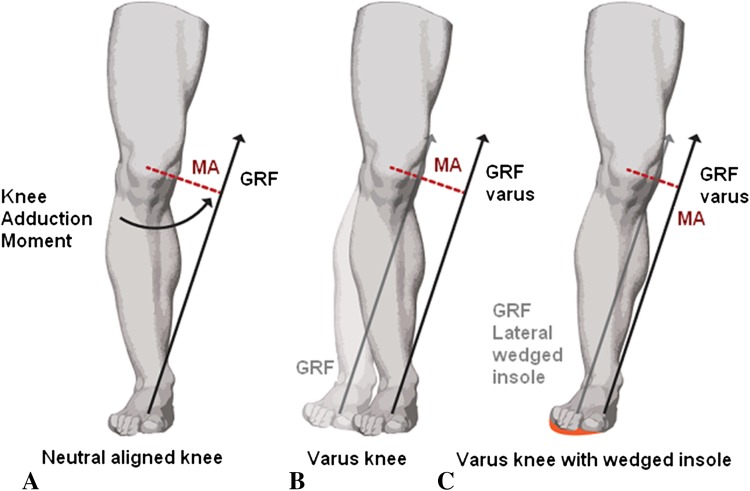Fig. 4A–C.
Knee adduction moment during walking for a neutral aligned knee, a varus knee, and a varus knee with wedged insole is shown. The magnitude and direction of the ground reaction force are shown by the length and direction of the straight black or gray arrows. The length of the moment arm of the ground reaction force acting about the knee is indicated by a dotted line. (A) The neutral-aligned knee: knee adduction moment increases if the ground reaction force increases or the length of the moment arm increases. (B) For a varus knee deformity (superimposed over a neutrally aligned knee [light-shaded leg]), the moment arm (dotted line) is increased. (C) For the varus knee with a wedged insole, our hypothesis is that both the laterally wedged insole and the valgus knee brace shift the center of pressure, causing the ground reaction force to pass closer to the center of the knee. This effect decreases moment arm and reduces knee adduction moment compared with the situation without a lateral wedge. MA = moment arm; GRF = ground reaction force. (Adapted by permission from Macmillan Publishers Ltd: Nature Reviews Rheumatology. 2011;7:113–122. Copyright 2011.)

